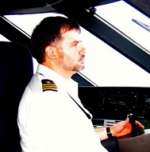|
Starpath Electronic Chart Navigation
Course Overview
Duration
Estimated to be about 30 to 60 hours, depending on how much optional material you wish to cover. You work at your own pace, on your own schedule.
Dates
You can start at any time, and submit quizzes and discussion any time of day or night. The end of lesson quizzes must be submitted sequentially.
You have one year to complete the course, or request an extension.
Course description
After establishing a background on best practices for echart navigation in general, we concentrate on the use of electronic navigational charts (ENC), teaching the unique approach to chart reading that these charts call for. We then practice making paper chart counterparts with the NOAA Custom Chart app.
Instructors
How the course works
Please read the general description of How the Courses Work. Those notes apply to all courses. You can sign up for a course anytime.
We use our textbook Introduction to Electronic Chart Navigation with examples and practice exercises for each lesson and topic. For practical application we use the versatile qtVlm as an excellent representative of a full-featured electronic chart navigation program. It is free for both Mac and PC versions.
Prerequisites
There are no official prerequisites for this course, but a basic understanding of piloting and dead reckoning and basic use of traditional nautical charts is recommended. We provide the basic background needed for the weather routing section.
Student Objectives
- Understand distinctions between RNC and ENC
- Learn the object-attribute structure of ENC charts
- Understand depth contour options in ENC
and special role of safety contour
- Role of safety depth as distinct from safety contour
- Learn the ENC coding policies for lights
- Practice with actual echart navigation using the qtVlm internal simulator
- Learn to shape a safe efficient course
- Learn the important role of AIS and related collision avoidance
- Correct heading underway to account for currents
- Learn to optimize velocity made good in a desired direction under power or sail
- Learn how hazards and obstructions are presented in ENC
- Create and print NOAA Custom Charts (NCC)—the paper charts of the future.
- Learn the use of wind, waves, and ocean current overlays on ENC
- Learn to use polar diagrams for sailboat specific navigation
- See Lesson Plans for specific topics
Certification
This course offers a unique Starpath Certification in Electronic Chart Navigation. See Notes on Certification.
|


